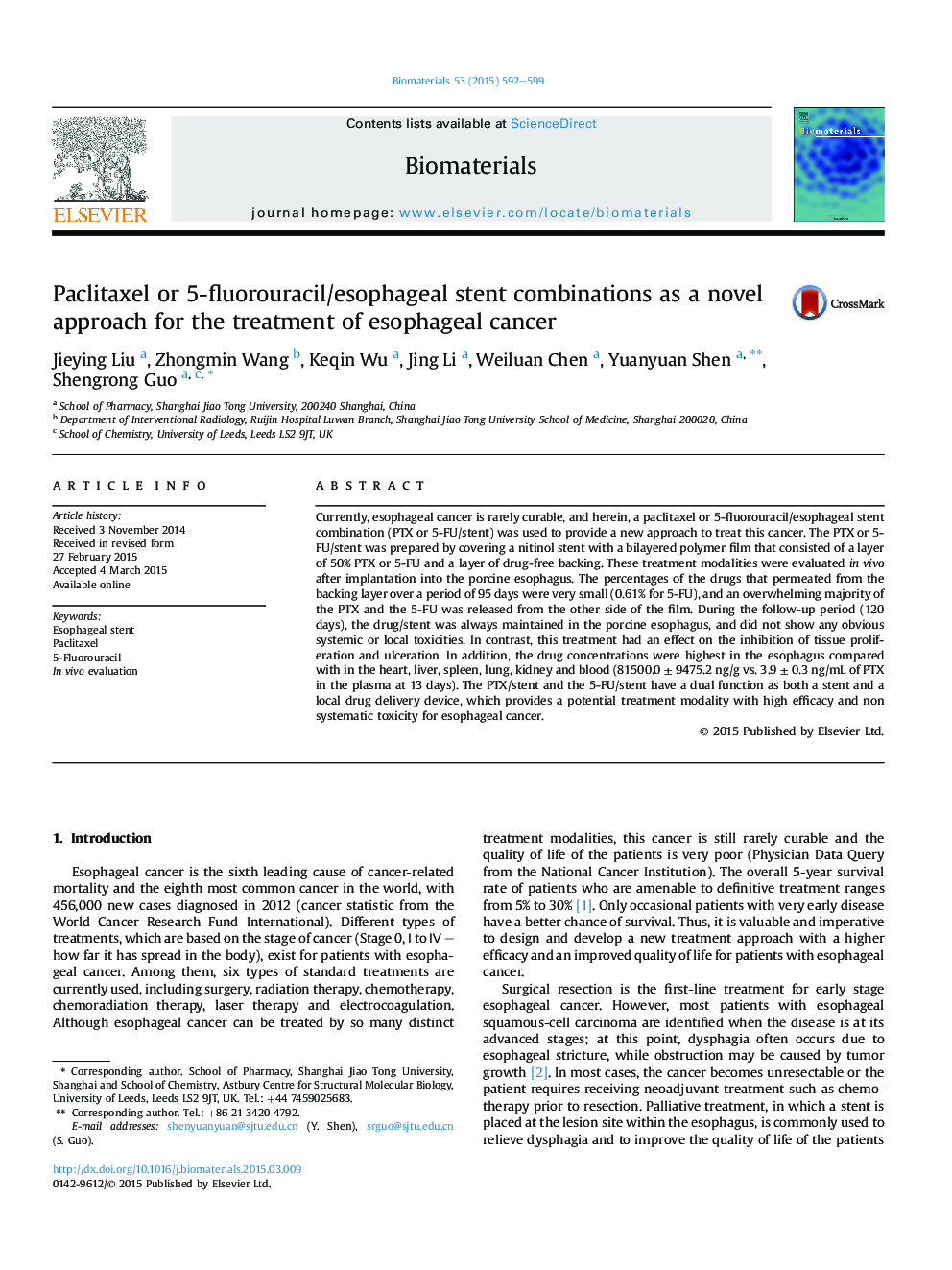| Article ID | Journal | Published Year | Pages | File Type |
|---|---|---|---|---|
| 6485794 | Biomaterials | 2015 | 8 Pages |
Abstract
Currently, esophageal cancer is rarely curable, and herein, a paclitaxel or 5-fluorouracil/esophageal stent combination (PTX or 5-FU/stent) was used to provide a new approach to treat this cancer. The PTX or 5-FU/stent was prepared by covering a nitinol stent with a bilayered polymer film that consisted of a layer of 50% PTX or 5-FU and a layer of drug-free backing. These treatment modalities were evaluated in vivo after implantation into the porcine esophagus. The percentages of the drugs that permeated from the backing layer over a period of 95 days were very small (0.61% for 5-FU), and an overwhelming majority of the PTX and the 5-FU was released from the other side of the film. During the follow-up period (120 days), the drug/stent was always maintained in the porcine esophagus, and did not show any obvious systemic or local toxicities. In contrast, this treatment had an effect on the inhibition of tissue proliferation and ulceration. In addition, the drug concentrations were highest in the esophagus compared with in the heart, liver, spleen, lung, kidney and blood (81500.0 ± 9475.2 ng/g vs. 3.9 ± 0.3 ng/mL of PTX in the plasma at 13 days). The PTX/stent and the 5-FU/stent have a dual function as both a stent and a local drug delivery device, which provides a potential treatment modality with high efficacy and non systematic toxicity for esophageal cancer.
Related Topics
Physical Sciences and Engineering
Chemical Engineering
Bioengineering
Authors
Jieying Liu, Zhongmin Wang, Keqin Wu, Jing Li, Weiluan Chen, Yuanyuan Shen, Shengrong Guo,
